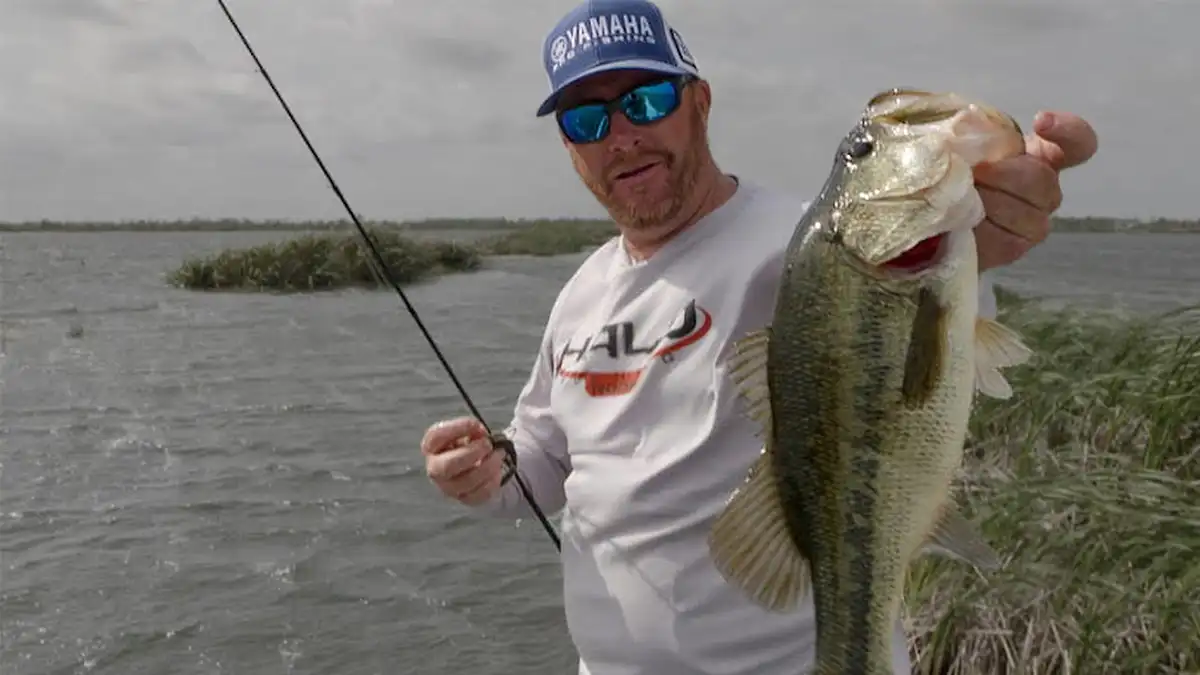Wobble heads or swing head jigs are often considered bottom-oriented lures that perform well on hard rock, shell, or sand bottoms. Despite the norm, Scott Canterbury uses wobble heads to fish over shallow grass with great success.
Canterbury will fish it more like a swim-jig than a swing jig in which you would typically pop or drag along the bottom. He does this by adopting a bulky trailer with a wide-body and hard-kicking legs that keep the bait up and draw attention from bass. The bulky plastic trailer can be rigged tex-posed on a swing head, which gives it better weedless ability.
Much like a swim jig, Canterbury uses this tactic to cover water as grass flats are often vast, with fish occupying isolated pockets and distinct areas. Making multiple casts while keeping the bait moving allows Canterbury to encounter fish quickly. A rod with a soft tip is beneficial with any cast-and-wind bait as it allows time for fish to eat it before setting the hook.
FISHING TACKLE USED
- LURE – NetBait Kickin’ B
- SWING HEAD JIG – Dirty Jigs Pivot Point Football Head Jig
- ROD – Halo Scott Canterbury Casting Rod, 7’3″ Extra Med Hvy
- REEL – Ardent Apex Casting Reel
- LINE – P-Line Tactical Fluorocarbon, 15-pound
Canterbury demonstrates how he likes to fish the swing head jig and how effective it is in windy conditions, grass conditions a scenario that generally makes for tough bass fishing. But with this approach he can maintain good contact with his lure in windy conditions and detect bites with a lot more speed and accuracy.
Bass fishing is about being efficient in the conditions you are dealt. So finding new ways to present lures more efficiently in the conditions is always paramount for being successful in fishing. It’s often how new techniques and rigs are born and later become the norm.












